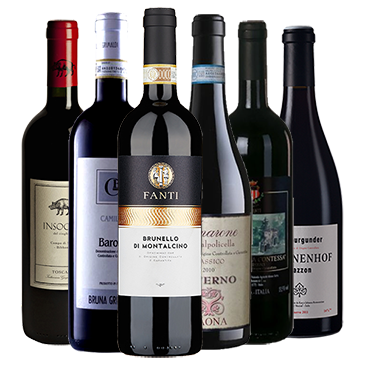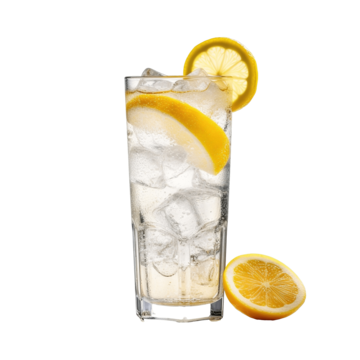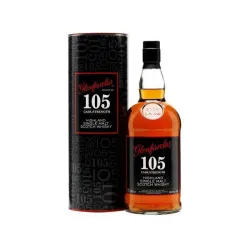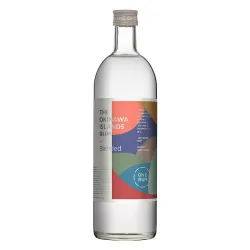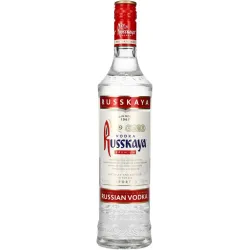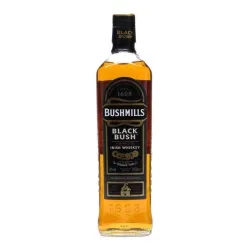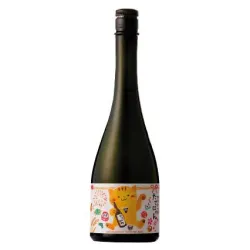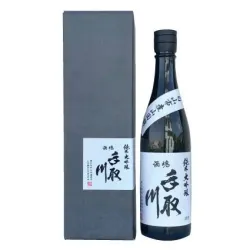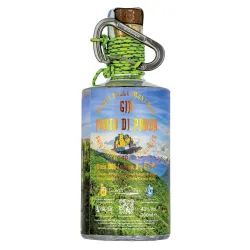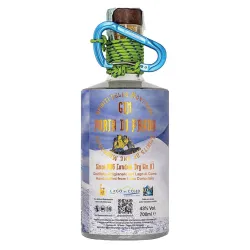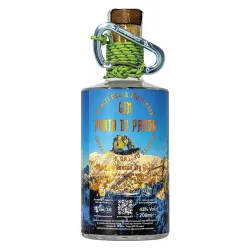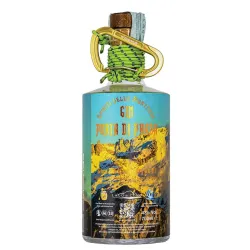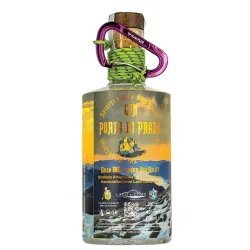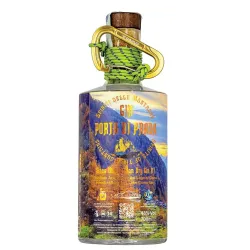Spirits
A distillate is an alcoholic beverage obtained by distillation. Distillation is a process of heating an alcoholic mixture to a specific temperature, so that the volatile components vaporize and can be separated from the less volatile components. The volatile components are then condensed in a separate vessel. The result is a more concentrated alcoholic beverage than the original blend. Some examples of spirits are gin, vodka, rum, whiskey and brandy. The alcohol content of distillates can vary considerably, depending on the type of distillate and the distillation process.
Subcategories
-
Armagnac
Armagnac is a type of brandy produced in the Armagnac region of southwestern France. It is distilled from wine made from white or red grapes and aged in oak barrels. Armagnac is known for its rich, complex flavor and is often considered a premium alternative to cognac. The aging process can vary, with some Armagnacs aged for several decades, giving them a smooth, mellow taste. The alcohol content of Armagnac is typically around 40% ABV. -
Brandy
Brandy is an alcoholic beverage made by distilling wine, usually made from grapes, which is then aged in wooden barrels. Its origin is uncertain, but it is thought to have been first produced in France during the 14th century. Brandy comes in different varieties, depending on the region of production and aging methods. It has an intense and complex flavor, with notes of dried fruit, vanilla, and wood. -
Cachaca
Cachaça is a traditional alcoholic beverage from Brazil, with a rich and fascinating history. This unique spirit is made through the fermentation and distillation of fresh sugarcane juice.
The history of cachaça dates back to the Portuguese colonization of Brazil when African slaves worked in sugarcane plantations. They discovered that fermented sugarcane juice could be distilled to obtain a liquid with intense flavor and complex aromas.
Cachaça differs from rum in its production method and the type of sugarcane used. While rum is made from molasses, a byproduct of sugar production, cachaça is derived from the direct fermentation of fresh sugarcane juice.
The production process of cachaça begins with the harvest of sugarcane, which is then crushed to extract the sweet juice. This juice is then fermented for several days, aided by natural yeasts present in the environment. Subsequently, distillation takes place, separating the alcohol from the rest of the juice components.
Cachaça can be aged in wooden barrels, similar to those used for aging whisky. This process imparts greater complexity and depth of flavor to the spirit.
Cachaça is an essential ingredient in various traditional Brazilian drinks, including the famous caipirinha. This classic cocktail is made by mixing cachaça, sugar, lime, and ice, creating a refreshing and flavorful beverage.
Today, cachaça has become a cultural symbol of Brazil and a globally appreciated drink. Its versatility and the variety of styles and flavors available have contributed to its popularity worldwide.
In summary, cachaça is a Brazilian beverage distilled from fresh sugarcane juice. Its history dates back to the Portuguese colonization of Brazil and has become an icon of Brazilian culture. With its unique flavor and versatility in cocktails like the caipirinha, cachaça continues to captivate beverage enthusiasts worldwide. -
Calvados
Calvados is a prestigious apple brandy with origins in the Normandy region of France. Its history dates back to the 17th century when Benedictine monks began distilling apples to create a unique spirit. The name "calvados" derives from the region where it is produced.
The production of calvados starts with the careful selection of apples, ensuring only the finest varieties are used. The apples are then crushed, and the resulting juice is fermented for several weeks, converting the sugars into alcohol. Following fermentation, the liquid is distilled in copper stills to create a clear and pure spirit.
What sets calvados apart is its aging process. The distilled spirit is transferred to oak barrels, where it matures for a variable period, ranging from a few years to several decades. During this aging process, the calvados develops complexity and acquires fruity, floral, and woody notes. The aroma and flavor profile of calvados can vary depending on the apples used and the production techniques employed.
Calvados can be enjoyed neat as a digestif, served slightly warmed to enhance its aromas. It is also a highly regarded ingredient in cocktails, adding an element of elegance and depth to mixed drinks. Additionally, calvados can be used in cooking to infuse sauces, desserts, or even savory dishes like meats or cheeses with its distinctive flavor.
Today, calvados is revered as a product of exceptional quality and refinement, representing the art and tradition of Normandy. Its production is regulated to ensure authenticity and quality. Appreciated by connoisseurs around the world, calvados continues to captivate with its rich flavors and centuries-old heritage. -
Cognac
Cognac is a prestigious brandy produced in the Cognac region of France. Its history dates back to the 17th century when local artisans began distilling white wines to create a high-quality spirit. Cognac is renowned for its strict production process and aging in oak barrels, which imparts a complex aromatic profile and a distinctive smoothness to the liquor. Cognac is appreciated for its elegance and versatility, both as a sipping spirit on its own and as an ingredient in sophisticated cocktails. -
Genever
Genever is a traditional Dutch liqueur, often considered the predecessor of gin. Its history dates back to the 16th century when Dutch distillers began blending alcohol with aromatic herbs to create a product with medicinal properties. Genever is produced using a base of grain alcohol, primarily rye, and is flavored with a blend of herbs, spices, and juniper berries. It has a distinctive flavor that can range from sweet to dry, and is often served neat, in cocktails, or as an accompaniment to a beer. Genever is an important part of Dutch tradition and has gained popularity worldwide as a unique and flavorful beverage. -
Gin
Gin is a popular alcoholic beverage made by distilling grain and juniper berries. It is typically served as a distilled spirit and can be consumed on its own or used as a base for cocktails such as martinis or gin and tonics. The flavor of gin can vary greatly depending on the specific brand and the ingredients used in its production. -
Grappa
Grappa is an Italian distilled spirit with ancient traditions. This alcoholic beverage is obtained through the distillation of grape pomace, which consists of the leftover grape skins, seeds, and stems after the winemaking process. Grappa is said to have origins dating back to the Middle Ages and has since gained a great reputation worldwide. Characterized by an intense and aromatic flavor, Grappa appears clear or slightly golden in color. Each sip of Grappa tells the story of Italian lands and their rich winemaking heritage. To be enjoyed slowly, Grappa is a symbol of conviviality and tradition. -
Mezcal
Mezcal is a Mexican distillate made from the agave plant, although different types of agave can be used. It has a smoky and slightly sweet taste, due to the cooking of the plant before distillation. The mezcal production process is artisanal and varies from region to region, but in general it involves cooking the whole plants in underground ovens, grinding them in a grinding stone, fermenting the juice and finally distilling it. Mezcal can be enjoyed pure, served with a slice of orange and salt, or used as an ingredient in cocktails. It has a fairly high alcohol content and, thanks to its complexity and smoky taste, is gaining popularity among lovers of craft distillates. -
Pisco
Pisco is a South American distilled spirit, particularly from Peru and Chile, made by distilling fresh grapes. It has a dry and intense flavor, with notes of fruit and citrus. Pisco can be enjoyed on its own but is often used as a base for cocktails like the Pisco Sour. The quality of Pisco depends on the grapes used and the production method. -
Rum
Rum is a distilled alcoholic beverage made from sugarcane by-products such as molasses or sugarcane juice. It is typically aged in oak barrels, which imparts flavor and color to the spirit. The color of rum can range from clear and colorless to dark brown, depending on the aging process. Rum is most commonly associated with the Caribbean and is a popular ingredient in cocktails such as Mai Tais, Daiquiris, and Mojitos. The alcohol content of rum can range from 40-60% ABV, depending on the brand and the distillation process. Some of the most famous rum producing regions include the Caribbean, Central America, and the Philippines. -
Sake - Oriental Liqueurs
Sake is a traditional Japanese alcoholic beverage made from the fermentation of rice. It has a delicate and complex flavor that can range from sweet to dry. It is often served warm or at room temperature, accompanied by Japanese dishes such as sushi and tempura. -
Tequila
Tequila is a Mexican distilled spirit made by distilling blue agave. It has a strong and distinctive flavor, with notes of agave and a smoky finish. Tequila can be enjoyed straight as a digestif or used as an ingredient in cocktails like the Margarita. The quality of Tequila depends on the agave plants used and the production method. -
Vodka
Vodka is a clear and colorless distilled spirit, characterized by a neutral taste and high alcohol content. It is made from the distillation of grains, potatoes, or other fermented materials and can be produced in various countries, including Russia, Poland, and Sweden. Vodka is often served chilled or used as an ingredient in cocktails but can also be enjoyed neat. Its neutral nature makes it very versatile as a base for different drinks, allowing the taste of other ingredients to shine through. The quality of vodka depends on the raw materials used and the distillation process, which can affect its flavor, aroma, and purity. -
Whiskey
Whiskey is a distilled alcoholic beverage originally from Scotland and Ireland. It is made from grains such as barley, rye, corn, and wheat, which are fermented and distilled. Whiskey comes in different varieties, depending on the region of production and aging methods, which can range from three to thirty years. It has an intense and distinctive flavor, with notes of malt, smoke, and wood. -
Other Spirits

